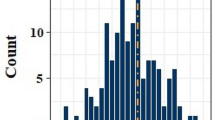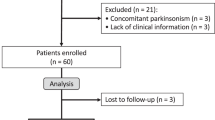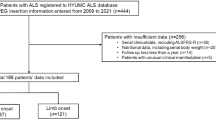Abstract
Amyotrophic lateral sclerosis (ALS) is the most common neurodegenerative disease of the motor system. Bulbar symptoms such as dysphagia and dysarthria are frequent features of ALS and can result in reductions in life expectancy and quality of life. These dysfunctions are assessed by clinical examination and by use of instrumented methods such as fiberendoscopic evaluation of swallowing and videofluoroscopy. Laryngospasm, another well-known complication of ALS, commonly comes to light during intubation and extubation procedures in patients undergoing surgery. Laryngeal and pharyngeal complications are treated by use of an array of measures, including body positioning, compensatory techniques, voice and breathing exercises, communication devices, dietary modifications, various safety strategies, and neuropsychological assistance. Meticulous monitoring of clinical symptoms and close cooperation within a multidisciplinary team (physicians, speech and language therapists, occupational therapists, dietitians, caregivers, the patients and their relatives) are vital.
Key Points
-
Bulbar symptoms such as dysarthria and dysphagia are frequent features of amyotrophic lateral sclerosis (ALS) and can reduce life expectancy and quality of life
-
Dysarthria results from flaccid or spastic paresis of the musculature of the face, tongue, lips, palate, pharynx and larynx
-
Dysphagia can result from weakness or spasticity of the muscles innervated by trigeminal, facial, hypoglossal, glossopharyngeal or vagal nerves
-
Laryngospasm, which is defined as a paroxysmal episode with the sensation that air cannot be moved in and out, accompanied by inspiratory stridor, affects up to 19% of patients with ALS
-
Speech therapy can be helpful in the early stages of ALS to correct ineffective compensation strategies; augmentative and alternative communication devices should be provided as the disease progresses
-
Compensatory and restitutional methods and dietary modifications should be used to ensure oral alimentation for as long as possible and to prevent aspiration of food; enteral nutrition should be considered as dysphagia increases
This is a preview of subscription content, access via your institution
Access options
Subscribe to this journal
Receive 12 print issues and online access
$209.00 per year
only $17.42 per issue
Buy this article
- Purchase on Springer Link
- Instant access to full article PDF
Prices may be subject to local taxes which are calculated during checkout
Similar content being viewed by others
References
Abrahams S et al. (1997) Relation between cognitive dysfunction and pseudobulbar palsy in amyotrophic lateral sclerosis. J Neurol Neurosurg Psychiatry 62: 464–472
Tandan R and Bradley WG (1985) Amyotrophic lateral sclerosis. Part 1: clinical features, pathology, and ethical issues in management. Ann Neurol 18: 271–280
Tandan R and Bradley WG (1985) Amyotrophic lateral sclerosis. Part 2: clinical features, pathology, and ethical issues in management. Ann Neurol 18: 419–431
Rosen AD (1978) Amyotrophic lateral sclerosis: clinical features and prognosis. Ann Neurol 35: 639–642
Haverkamp LJ et al. (1995) Natural history of amyotrophic lateral sclerosis in a database population: validation of a scoring system and a model for survival prediction. Brain 118: 707–719
Oliver D (1996) The quality of care and symptom control—the effects on the terminal phase of ALS/MND. J Neurol Sci 139: 134–136
Desport JC et al. (1999) Nutritional status is a prognostic factor for survival in ALS patients. Neurology 53: 1059–1063
Kasarskis EJ et al. (1996) Nutritional status of patients with amyotrophic lateral sclerosis: relation to the proximity of death. Am J Clin Nutr 63: 130–137
Bourke SC et al. (2006) Effects of non-invasive ventilation on survival and quality of life in patients with amyotrophic lateral sclerosis: a randomised controlled trial. Lancet Neurol 5: 140–147
Worwood AM and Leigh PN (1998) Indicators and prevalence of malnutrition in motor neuron disease. Eur Neurol 40: 159–163
Lowe JS and Leigh N (2002) Disorders of movement and system degenerations. In Greenfield´s Neuropathology, vol 2, edn 7, 325–430 (Eds Graham DI and Lantos PL) London: Arnold
Strand EA et al. (1996) Management of oral-pharyngeal dysphagia symptoms in amyotrophic lateral sclerosis. Dysphagia 11: 129–139
Carpenter RJ III et al. (1978) The otolaryngologic presentation of amyotrophic lateral sclerosis. Otolaryngology 86: 479–484
Chen A and Garrett CG (2005) Otolaryngologic presentations of amyotrophic lateral sclerosis. Otolaryngol Head Neck Surg 132: 500–504
McGuirt WF and Blalock D (1980) The otolaryngologist's role in the diagnosis and treatment of amyotrophic lateral sclerosis. Laryngoscope 90: 1496–1501
Aronson AE et al. (1992) Rapid voice tremor, or “flutter,” in amyotrophic lateral sclerosis. Ann Otol Rhinol Laryngol 101: 511–518
Roth CR et al. (1996) Spasmodic dysarthrophonia symptoms as initial presentation of amyotrophic lateral sclerosis. J Voice 10: 362–367
Kent R et al. (1998) The dysarthrophonias: speech-voice profiles, related dysfunction, and neuropathology. J Med Speech Lang Pathol 6: 165–211
Watts CR and Vanryckeghem M (2001) Laryngeal dysfunction in amyotrophic lateral sclerosis: a review and case report. BMC Ear Nose Throat Disord 1: 1
Scott A and McPhee M (2006) Multidisciplinary care: speech and language therapy. In Palliative Care in Amyotrophic Lateral Sclerosis: from Diagnosis to Bereavement, edn 2, 213–227 (Eds Oliver D et al.) Oxford: Oxford University Press
Yorkston K et al. (1999) Management of Motor Speech Disorders in Children and Adults, edn 2. Austin, TX: Pro-Ed
Murphy J (2004) Perceptions of AAC by people with motor neuron disease and their communication partners. Augmentative and Alternative Communication 20: 259–271
Wagner-Sonntag E and Prosiegel M (2006) Dysphagia. In Palliative Care in Amyotrophic Lateral Sclerosis: from Diagnosis to Bereavement, edn 2, 95–109 (Eds Oliver D et al.) Oxford: Oxford University Press
Janzen VD et al. (1996) Otolaryngologic manifestations of amyotrophic lateral sclerosis. J Otolaryngol 17: 41–42
Hillel AD and Miller R (1989) Bulbar amyotrophic lateral sclerosis: patterns of progression and clinical management. Head Neck 11: 51–59
Higo R et al. (2004) Longitudinal analysis of progression of dysphagia in amyotrophic lateral sclerosis. Auris Nasus Larynx 31: 247–254
Kawai S et al. (2003) A study of the early stage of dysphagia in amyotrophic lateral sclerosis. Dysphagia 18: 1–8
Robbins J (1987) Swallowing in ALS and motor neuron disorders. Neurol Clin 5: 213–229
Newall AR et al. (1996) The control of oral secretions in bulbar ALS/MND. J Neurol Sci 139: 43–44
Hillel A et al. (1999) Presentation of ALS to the otolaryngologist/head and neck surgeon: getting to the neurologist. Neurology 53: 22–25
Amin MR et al. (2006) Sensory testing in the assessment of laryngeal sensation in patients with amyotrophic lateral sclerosis. Ann Otol Rhinol Laryngol 115: 528–534
Power ML et al. (2007) Deglutitive laryngeal closure in stroke patients. J Neurol Neurosurg Psychiatry 78: 141–146
Prosiegel M (2007) Neurogenic dysphagia [German]. Nervenarzt 78: 1209–1215
Ertekin C et al. (2000) Pathophysiological mechanism of oropharyngeal dysphagia in amyotrophic lateral sclerosis. Brain 123: 125–140
Sasaki CT and Suzuki M (1997) Laryngeal spasm: a neurophysiologic redefinition. Ann Otol Rhinol Laryngol 86: 150–157
Sperfeld AD et al. (2005) Laryngospasm: an underdiagnosed symptom of X-linked spinobulbar muscular atrophy. Neurology 64: 753–754
Forshew DA and Bromberg MB (2003) A survey of clinicans' practice in the symptomatic treatment of ALS. Amyotroph Lateral Scler Other Motor Neuron Disord 4: 258–263
Scott A and Staios G (2004) Sensory-motor approaches to oro-facial facilitation. In A Practical Approach to the Management of Saliva, edn 2, 65–73 (Eds Scott A and Johnson H) Austin, TX: Pro-Ed
Beukelman D and Ball L (2002) Improving AAC use for persons with acquired neurogenic disorders: understanding human and engineering factors. Assist Technol 14: 33–44
Kübler A et al. (2005) Patients with ALS can use sensorimotor rhythms to operate a brain-computer interface. Neurology 64: 1775–1777
Hardy E, Morton Robinson N (1999) Swallowing Disorders Treatment Manual, edn 2. Texas: Pro-Ed
Ohmae Y et al. (1996) Effects of two breath-holding maneuvers on oropharyngeal swallow. Ann Otol Rhinol Laryngol 105: 123–131
Kuhlemeier KV et al. (2001) Effect of liquid bolus consistency and delivery method on aspiration and pharyngeal retention in dysphagia patients. Dysphagia 16: 119–122
Hefferman C et al. (2004) Nutritional management in MND/ALS patients: an evidence based review. Amyotroph Lateral Scler Other Motor Neuron Disord 5: 72–83
Squires N (2006) Dysphagia management for progressive neurological conditions. Nurs Stand 20: 53–57
Norton B et al. (1996) A randomised prospective comparison of percutaneous endoscopic gastrostomy and nasogastric tube feeding after acute dysphagic stroke. BMJ 312: 13–16
Kasarskis EJ et al. (1999) A retrospective study of percutaneous endoscopic gastrostomy in ALS patients during the BDNF and CNTF trials. J Neurol Sci 169: 118–125
Chiò A et al. (2004) Percutaneous radiological gastrostomy: a safe and effective method of nutritional tube placement in advanced ALS. J Neurol Neurosurg Psychiatry 75: 645–647
Mathus-Vliegen LMH et al. (1994) Percutaneous endoscopic gastrostomy in patients with amyotrophic lateral sclerosis and impaired pulmonary function. Gastrointest Endosc 40: 463–469
Miller RG et al. (1999) Practice parameter: the care of the patient with amyotrophic lateral sclerosis (an evidence-based review). Neurology 52: 1311–1323
Ludolph AC (2006) 135th ENMC International Workshop: nutrition in amyotrophic lateral sclerosis 18–20 of March 2005, Naarden, The Netherlands. Neuromuscul Disord 16: 530–538
Schrag SP et al. (2007) Complications related to percutaneous endoscopic gastrostomy (PEG) tubes: a comprehensive clinical review. J Gastrointestin Liver Dis 16: 407–418
Mazzini L et al. (1995) Percutaneous endoscopic gastrostomy and enteral nutrition in amyotrophic lateral sclerosis. J Neurol 242: 695–698
Scott AG and Austin HE (1994) Nasogastric feeding in the management of severe dysphagia in motor neuron disease. Palliat Med 8: 45–49
Talmi YP et al. (1989) Reduction of salivary flow in amyotrophic lateral sclerosis with Scopoderm TTS. Head Neck 11: 565
Verma A and Steele J (2006) Botulinum toxin improves sialorrhea and quality of living in bulbar amyotrophic lateral sclerosis. Muscle Nerve 34: 235–237
Andersen PM et al. (2001) External radiation of the parotid glands significantly reduces drooling in patients with motor neurone disease with bulbar paresis. J Neurol Sci 191: 111–114
Kelly GS (1998) Clinical applications of N-acetylcysteine. Altern Med Rev 3: 114–127
Simmons Z (2006) Management strategies for patients with amyotrophic lateral sclerosis from diagnosis through death. Neurologist 11: 257–270
Sostarko M et al. (1998) Severe progression of ALS/MND after intervertebral discectomy. J Neurol Sci 160: 42–46
Short SO and Hillel AD (1989) Palliative surgery in patients with bulbar amyotrophic lateral sclerosis. Head Neck 11: 364–369
Hess DR (2005) Tracheostomy tubes and related appliances. Respir Care 50: 497–510
Obholzer RJ et al. (2008) An approach to the management of paroxysmal laryngospasm. J Laryngol Otol 122: 57–60
Klasner E et al. (1999) Patterns of perceptual features in speakers with ALS: a preliminary study of prominence and intelligibility considerations. J Med Speech Lang Pathol 7: 117–125
Logemann JA et al. (1998) Normal swallowing physiology as viewed by videofluoroscopy and videoendoscopy. Folia Phoniatr Logop 50: 311–319
Wright RER and Jordan C (1997) Videofluoroscopic evaluation of dysphagia in motor neuron disease with modified barium swallow. Palliat Med 11: 44–48
Tsokos M et al. (1998) Barium aspiration with fatal outcome [German]. Aktuelle Radiol 8: 201–203
Miyazawa T et al. (1990) Effect of water-soluble contrast medium on the lung in rats. Comparison of iotrolan, iopamidol, and diatrizoate. Invest Radiol 25: 999–1003
Rosenbek JC et al. (1996) A penetration–aspiration scale. Dysphagia 11: 93–98
Langmore SE (2001) Endoscopic Evaluation and Treatment of Swallowing Disorders. New York: Thieme
Doggett DL et al. (2002) Recent developments in diagnosis and intervention for aspiration and dysphagia in stroke and other neuromuscular disorders. Curr Atheroscler Rep 4: 311–318
Leder SB et al. (2004) Use of fiberoptic endoscopic evaluation of swallowing (FEES) in patients with amyotrophic lateral sclerosis. Dysphagia 19: 177–181
Acknowledgements
The authors thank Margit Friedrich and Falk Schradt for helpful comments and Katarina Groth for proofreading of the manuscript. Désirée Lie, University of California, Irvine, CA, is the author of and is solely responsible for the content of the learning objectives, questions and answers of the Medscape-accredited continuing medical education activity associated with this article.
Author information
Authors and Affiliations
Corresponding author
Ethics declarations
Competing interests
The authors declare no competing financial interests.
Rights and permissions
About this article
Cite this article
Kühnlein, P., Gdynia, HJ., Sperfeld, AD. et al. Diagnosis and treatment of bulbar symptoms in amyotrophic lateral sclerosis. Nat Rev Neurol 4, 366–374 (2008). https://doi.org/10.1038/ncpneuro0853
Received:
Accepted:
Published:
Issue Date:
DOI: https://doi.org/10.1038/ncpneuro0853
This article is cited by
-
Guggulsterone Selectively Modulates STAT-3, mTOR, and PPAR-Gamma Signaling in a Methylmercury-Exposed Experimental Neurotoxicity: Evidence from CSF, Blood Plasma, and Brain Samples
Molecular Neurobiology (2024)
-
A systematic review and narrative analysis of digital speech biomarkers in Motor Neuron Disease
npj Digital Medicine (2023)
-
Durch neurologische Erkrankungen bedingte Dysphagien
HNO Nachrichten (2023)
-
Ultrasonographic and manometric study of the tongue as biomarkers of dysphagia in patients with amyotrophic lateral sclerosis
Neurological Sciences (2023)
-
Swallowing Safety and Efficiency Impairment Profiles in Individuals with Amyotrophic Lateral Sclerosis
Dysphagia (2022)



